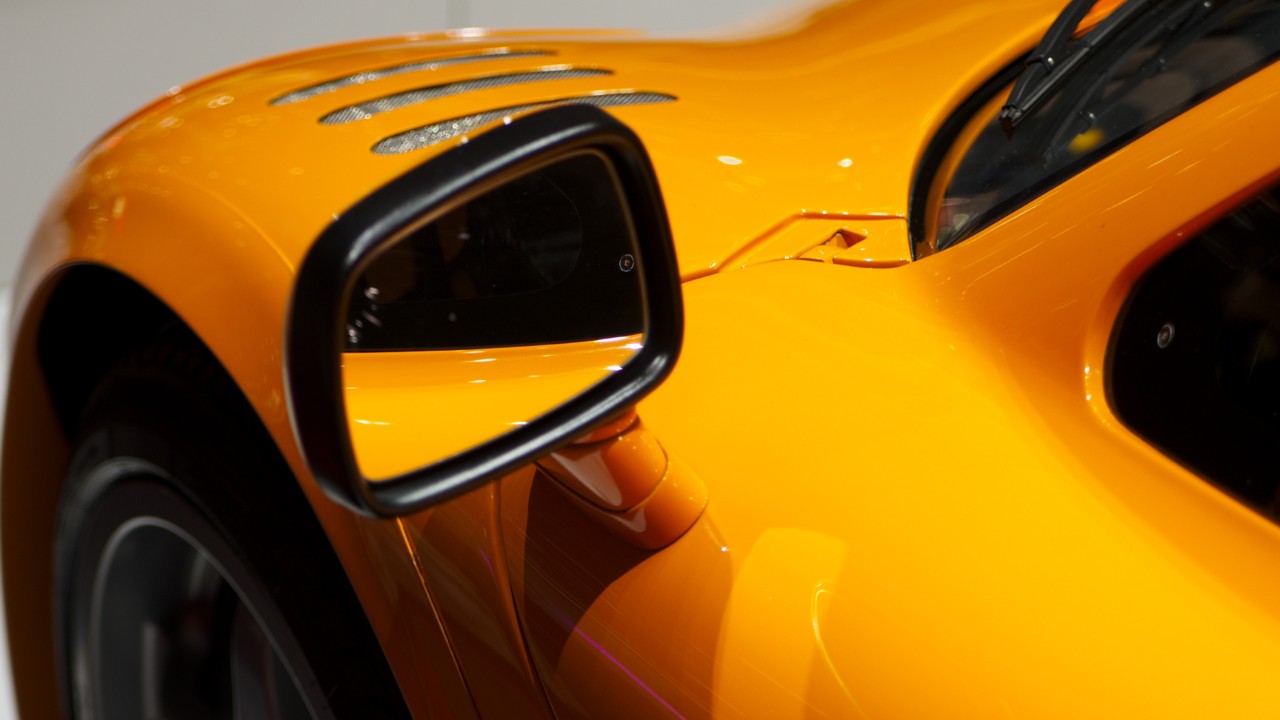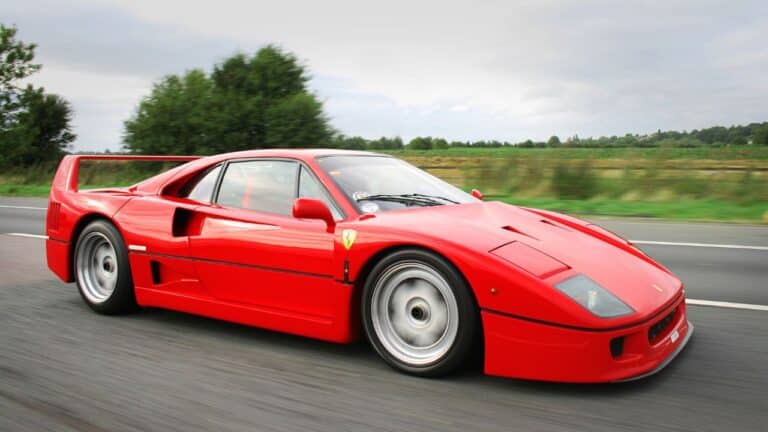24 Fastest McLaren Supercars Ever Made

McLaren was founded by New Zealand-born race car driver Bruce McLaren. The company started by building race cars, but in recent years, it has also built some excellent road-legal machines.
McLaren and speed go hand in hand, and we’re sure even Bruce would be impressed if he could see the cars they produce today.
We’ve listed the 24 fastest McLaren road cars ever made, ranked by their top speed.
McLaren Speedtail — Top Speed: 250+ Mph

With a few exceptions, McLaren tends to focus on the complete package rather than straight-line speed when developing their cars. However, the Speedtail is a different story. It’s built to be as fast as possible while remaining stable during top-speed runs.
With a hybrid powertrain consisting of a twin-turbocharged 4.0-liter V8 engine pumping out over 700-hp and a 300+ hp electric motor, the Speedtail has a total of 1,050 wild horses that need to be controlled. Power like that, combined with sleek, streamlined bodywork, means it’s capable of a top speed exceeding 250 mph.
McLaren F1 — Top Speed: 240 Mph

McLaren introduced the F1 in 1992, and it packed more technology and performance than any other supercar of that era. No wonder it’s one of the most legendary supercars ever made. It had a 3-seater cabin with a central driving position, carbon fiber construction, a BMW V12 engine, and the engine bay was covered in real gold.
The BMW V12 engine produces 618-hp and 479 lb-ft of torque, which isn’t a lot today, but it was enough to set a world record top speed of 240.1 mph in the 1990s. It’s still the fastest naturally aspirated car ever.
McLaren F1 LM — Top Speed: 225 Mph

The McLaren F1 LM is a road-going version of the F1 GTR race car. Only five were made to honor the five McLaren F1 GTRs that finished the 1995 24 Hours of Le Mans. Its 6.1-liter BMW V12 was upgraded to produce 671-hp, but it’s not as fast as the “standard” F1, despite having identical gear ratios.
The F1 LM was slower due to the added downforce and aerodynamic drag. It could easily leave the regular F1 in its dust going around a racetrack, but it wouldn’t exceed 225 mph in a straight line.
McLaren P1 — Top Speed: 217 Mph

Gearheads often consider the McLaren P1 as the F1’s spiritual successor. Like the F1, it was one of the most advanced cars of its era, but it’s not as fast as the ‘90s icon. It was part of the hypercar “Holy Trinity,” which also included the LaFerrari and Porsche 918, and the McLaren was easily the most futuristic-looking car of the three.
Its hybrid powertrain consisted of a twin-turbocharged 4.0-liter V8 engine and an electric motor, producing a total of 903-hp and 664 lb-ft of torque. It could reach 60 mph in just 2.5 seconds and continued accelerating until it reached 217 mph.
McLaren 720S — Top Speed: 212 Mph

The McLaren 720S was introduced as a replacement for the 650S and was the second all-new model in the McLaren Super Series. It’s 91% new compared to its predecessor, and the carbon monocoque was lighter and stiffer than the 650S.
It has a twin-turbocharged 4.0-liter V8 that produces 710-hp, or 720 PS, which is where its name comes from. Both the 720S and 720S Spider will sprint to 60 mph in just 2.8 seconds and have a 212 mph top speed.
McLaren Senna — Top Speed: 208 Mph

McLaren named the Senna after Brazilian Formula One racer Ayrton Senna to honor him and his success with the McLaren Formula One Team. The Senna is the third model in the McLaren Ultimate Series, joining the F1 and the P1, but it’s not a direct successor to those.
McLaren based the Senna largely on the 720S, but with various modifications, weight-saving measures, and a lot more aero for added downforce. It has a twin-turbocharged 4.0-liter V8 engine producing 789-hp and 590 lb-ft of torque, giving it a top speed of 208 mph.
McLaren 650S — Top Speed: 207 Mph

McLaren introduced the 650S in 2014 as a model positioned between the newly formed Sport Series, and the Ultimate Series cars. The 650S was based on the MP4-12C, but with 25% new parts.
It kept the MP4-12C’s 3.8-liter twin-turbocharged McLaren M838T V8 engine, but it now produced 641-hp and 500 lb-ft of torque. Power was sent to the wheels via a seven-speed dual-clutch Seamless-Shift gearbox. With the throttle mashed to the floor, 60 mph would arrive in just under three seconds, and those brave enough could see a 207 mph top speed.
McLaren MP4-12C — Top Speed: 207 Mph

The MP4-12C marked McLaren’s return to building road-going cars. While they’d been involved with the Mercedes-Benz SLR McLaren, the MP4-12C was the first true McLaren road car since the F1.
When the “12C” first arrived, it was a much more refined supercar for road use than what most of the competition offered. Its 3.8-liter twin-turbo V8 engine produced around 620-hp, giving it a top speed of 207 mph.
McLaren 750S — Top Speed: 206 Mph

In 2023, McLaren introduced the 750S as the successor of the 720S — it’s essentially a facelifted 720S with 30% new parts. This model will be McLaren Automotive’s last car that’s solely powered by an internal combustion engine.
As the name suggests, the 750S produces 750 PS, or 740-hp, and it’s 66lbs lighter than its predecessor. With a 15% shorter transmission final drive ratio, acceleration has improved, but top speed is now down to 206 mph.
McLaren 765LT — Top Speed: 205 Mph

McLaren unveiled the limited edition 765LT in 2020. Only 765 cars were made, and it’s based on the 720S and replaces the 675LT as a track-focused Super Series Longtail car.
Its M840T turbocharged 4.0-liter V8 engine is now rated at 765 PS (hence its name), or 755-hp, if you will. This was achieved by using a higher-capacity fuel pump, forged aluminum pistons and the Senna’s three-layer head gasket. Due to the added downforce, the 765LT isn’t as fast in a straight line as the 720S, managing a 205 mph top speed.
McLaren Artura — Top Speed: 205 Mph

While the McLaren Artura doesn’t have a V12 or V8 engine, its twin-turbocharged 3.0-liter V6 and electric motor still produce plenty of power — 671 hybrid horses, to be exact.
The Artura is the first McLaren hybrid to use a V6, and it can even drive 19 miles on electricity alone. Don’t worry, it’s still as fast as we’d expect a McLaren to be. In fact, with a 205 mph top speed, it’s faster than many of the V8-powered models.
McLaren 675LT — Top Speed: 205 Mph

McLaren introduced the 675LT as a lightweight, track-focused evolution of the McLaren 650S in 2015, and they only built 500 units of the coupe.
Behind the driver sits a variation of the twin-turbocharged 3.8-liter V8 engine, now producing 666-hp, or 675 PS — which explains its name. With a firm push on the loud pedal, it flies past 62 mph in 2.9 seconds, it’ll do a quarter-mile sprint in 10.3 seconds at 141.1 mph, and continues until it reaches its 205 mph top speed.
McLaren 12C Spider — Top Speed: 204 Mph

McLaren built a convertible version of the MP4-12C, known as the 12C Spider. When they designed the coupe, they’d already planned to make a convertible version, so the Spider didn’t need any additional strengthening and only weighed 88lbs more than the coupe. It even got to keep the coupe’s dihedral doors!
Most of McLaren’s open-top vehicles have a top speed that’s identical to the tin-top version, but that’s not the case with the 12C Spider. It’s not much slower, though. With the roof in place, it has a 204 mph top speed, 3 mph slower than the coupe, and can do 196 mph with the roof off.
McLaren 600LT — Top Speed: 204 Mph

McLaren unveiled the 600LT in 2018 as the top-of-the-line Sports Series variant. It’s based on the 570S and was the third longtail McLaren production car, as its body has been extended by 2.9 inches.
Thanks to various weight-saving measures, the 600LT is also 212 lbs lighter than the 570S, weighing in at 2,749lbs. The 3.8-liter twin-turbocharged V8 engine now produces 592-hp, or 600 PS, and 457 lb-ft of torque, giving the 600LT a top speed of 204 mph.
McLaren 570S — Top Speed: 204 Mph

McLaren produced the 570S from 2015 until 2021. It was powered by a new version of the twin-turbocharged 3.8-liter V8 engine that delivered 562-hp, or 570 PS, and 443lb-ft of torque.
McLaren focused on the 570S’ “day-to-day usability and driveability,” so they gave it more luggage space and interior storage than you’ll find in most of its competitors. That’s great, but what we really care about is performance, and the 570S delivered in that regard, too. It could reach 62 mph in 3.2 seconds and had a top speed of 204 mph.
McLaren 570S Spider — Top Speed: 204 Mph

Two years after the 570S went into production, McLaren released an open-top Spider version unveiled at the 2017 Goodwood Festival of Speed. Its roof takes 30 seconds to fold and unfold and can be operated at speeds up to 30 mph.
The 570S Spider uses the same drivetrain as the coupe, and since it’s only 101lbs heavier, performance remains largely the same, meaning it has a 204 mph top speed.
McLaren 570GT — Top Speed: 204 Mph

In 2016, McLaren presented a new addition to its Sport Series and 570 lineup as the Geneva Motor Show — the 570GT.
This is the more everyday user-friendly model in the 570 series. It’s less track-focused and offers slightly softer suspension, improved sound deadening, and a side-opening cargo hatch. As you may have guessed, the GT part means grand touring, but it still offers blistering performance, with an identical top speed to the 570S version.
McLaren 650S Spider — 204 Mph

McLaren first announced the 650S Spider in February 2014. Since the 650S carbon monocell was designed without a roof, the Spider version has the same structural stiffness as the coupe, and it only weighs 88 lb more. Its three-piece retractable hard-top carbon fiber roof takes 17 seconds to fold away.
Performance-wise, it’s also very similar to the coupe. Zero to 60 mph now takes a full three seconds, and top speed is down from 207 to 204 mph, which is still very respectable.
McLaren GTS — Top Speed: 203 Mph

In December 2023, McLaren introduced the GTS as the GT’s successor. It’s built on the same platform but features a revised design, reduced weight, and more power from the same twin-turbocharged 4.0-liter V8 engine.
This engine produces 626-hp and 465lb-ft of torque in the GTS, giving it a 3.1-second 0 to 60 mph acceleration time and a top speed of 203 mph.
McLaren Elva — Top Speed: 203 Mph

The McLaren Elva is a limited-production model and the fifth car in the McLaren Ultimate Series, after the F1, the P1, the Senna, and the Speedtail. Its design is inspired by the open-top race cars Bruce McLaren developed in the 1960s, and the name is derived from elle va, meaning “she goes” in French.
Due to extensive use of carbon fiber, the Elva only weighs 2,798 lbs. Its low weight, combined with a 4.0-liter twin-turbo V8 producing 804-hp and 590 lb-ft of torque, means it’ll reach 62 mph in under three seconds and has a top speed of 203 mph.
McLaren GT — Top Speed: 202 Mph

McLaren built the GT as a more practical everyday car, which means it’s less track-focused than many of their other models. That’s not a bad thing, though.
While many driving enthusiasts will argue that mid-engined cars aren’t great GT cars, McLaren doesn’t seem to agree. They’ve included a rear hatch for additional storage, and of course, there’s a frunk up front.
In total, the GT offers 20.1 cubic feet of cargo capacity — not bad for a mid-engined car. It doesn’t sacrifice any performance either, as its twin-turbo 4.0-liter V8 produces 612-hp, making it capable of a 202 mph top speed.
McLaren 600LT Spider — Top Speed: 201 Mph

Like the 600LT Coupe, the Spider is based on the McLaren 570S. In true McLaren form, it didn’t need any additional modifications to stiffen it up once the roof was gone. The Spider only weighs 110lbs more than the coupe, and since it’s mechanically identical, performance is also very similar.
It can accelerate to 62 mph in 2.9 seconds, reach 124 mph in 8.4 seconds, and tops out at 201 mph with the roof closed and 196 mph with it open.
McLaren 620R — Top Speed: 200 Mph

The McLaren 620R is a limited-production, road-legal version of the 570S GT4 race car. Since the road car isn’t subject to racing restrictions, it produces 612-hp (620 PS) and 457lb-ft. Only 225 were made.
It’s jam-packed with race-derived parts and components, including the 570S GT4’s adjustable carbon fiber wing, which generates 408lbs of downforce at 155 mph. Being so track-focused means the 620R’s top speed has suffered a bit, but it still manages to reach 200 mph.
McLaren 540C — Top Speed: 199 Mph

The 540C is the only McLaren on our list that can’t break the 200 mph barrier. It’s based on the 570S and intended to be an “entry-level” model focusing on “day-to-day usability and driveability.”
That said, the 540C is no slouch. It can accelerate to 60 mph from a standstill in 3.4 seconds and has a top speed of 199 mph.





